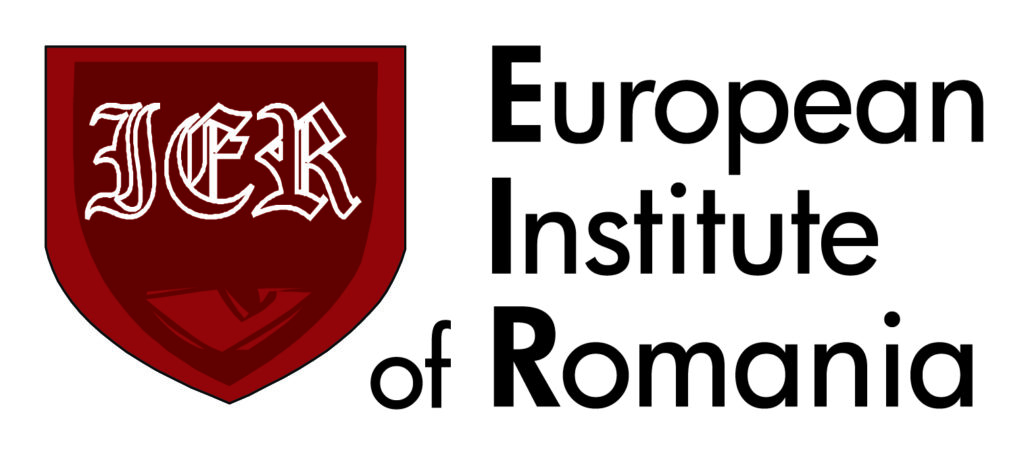2023 was the second year of a full-scale war, during which Ukraine was fighting for its territorial integrity and simultaneously trying to maintain the economy and build plans for the future. For contemporary conflicts and wars, the reconstruction and economic development issues do not postpone till the victory (or end) but take place simultaneously. Also, the country’s modern development rests on three pillars – the economy, social development, and the environment. As part of the analysis, we highlighted what happened in these areas during the year 2023 to assess the main threats and opportunities for the coming year.
Demography
According to the forecasts of Ella Libanova, director of the Institute of Demography and Social Research [1], next year (2024) will be the year of a catastrophic fall in the birth rate, and there are risks that by 2030, the population of Ukraine will decrease to 35 million (table 1).
Table 1. Forecasts of the population of Ukraine, mln

* Forecast made in 2019
** Forecast made in 2022 according to the scenario of a 20% decrease in population
*** Forecast made in 2021
**** Forecast made in 2023 in the in the borders of 2021(for the borders of 1993, the forecast is 26-35 mln)
Based on [2]
The potential for demographic growth has been exhausted in Ukraine. For 60 years since the mid-1960s, Ukraine’s birth rate has not provided even a simple reproduction of generations. For the next generation to be at least equal to the previous one, 100 women must give birth to approximately 215 children. In 2021, this figure in Ukraine was 120. During 2022, it was even less, but the reduction was not yet catastrophic due to children born in the first half of the year; according to optimistic forecasts for 2023, the rate will drop to 80. Moreover, Ukraine has a very high premature mortality, especially among men – 42% of twenty-year-old youths in Ukraine do not live to the age of 65 (these data are for 2021; they do not take into account the impact of the war)[3]. Also, the share of people aged 65+ already exceeds the share of young people under 15 by 20%.
Another reason for the decrease in the country’s population is migration.
According to the UNHCR, more than 6.2 million people left the country due to hostilities and the occupation of part of the territory, of which 1.3 million were deported (rarely, voluntarily left) to the aggressor states [4].
Predictably, the longer people stay abroad, the more they adapt and try to stay. In addition to the fact that the hot phase of the war will last longer, the infrastructure – both industrial and social, primarily residential – will be destroyed more. If the housing is destroyed and there is no work, then there will be nowhere and nothing to return to.
Environment
During the full-scale war, Russia has committed more than 3,100 cases of environmental crimes in Ukraine, totaling more than UAH 2.2 trillion, said Ruslan Strilets, Minister of Environmental Protection and Natural Resources of Ukraine [5]. The largest case of ecocide since the first days of the full-scale invasion was the explosion of the Kakhovka hydroelectric power station. The damage from the hydroelectric power plant explosion and the destruction of wildlife reached 10% of the total amount of damage at that time. The amount of damage caused by the Kakhovka hydroelectric power station explosion exceeded UAH 146 billion, or $4 billion at the time. We understand that we lost 14 cubic kilometers of water – it just went down in a few days, flooding huge areas. According to experts, 50% of the forest that was flooded will die [6]. A large amount of pollutants got into the water: washed away pesticides, agrochemicals, a large amount of garbage, and destruction waste. Also, the ingress of such a large volume of freshwater into the Black Sea has a corresponding impact.
Since the beginning of the war, Ukraine has faced significant consequences of hostilities, which led not only to direct destruction and economic losses but also affected the state of the environment and continues to harm the planet’s climate. War-related greenhouse gas emissions over the twelve months of war totaled 120 million tons of CO2 eq. This is equivalent to Belgium’s total annual greenhouse gas emissions [7].

Based on [7]
In large areas of Ukraine, there is significant damage to the surface layer of soils as a result of the construction of fortifications, explosions and burning of ammunition, military maneuvers, etc. According to estimates by the Kyiv School of Economics and the Zoi Environment Network [8], 186,000 square kilometers of land, which is almost 31% of Ukraine’s territory, are at risk of damage and pollution. Of these, more than 20,000 square kilometers are damaged by more than 75%. The territories of Donetsk, Kharkiv, and Zaporizhzhia regions suffered the most.
According to the State Emergency Service of Ukraine (SESU)[9], from February 24, 2022, to December 29 , 2023, a total of 465,512 explosive objects have been neutralized on Ukraine’s territory. An area of 1135 square kilometers has been surveyed.
On December 22, the United Nations published the Ukraine Common Country Analysis 2023 [10]. Chapter 4.4 Environment and Climate Change Analysis states that: “Military operations have also resulted in a sharp increase in the accumulation of waste, including damaged or abandoned military and civilian vehicles, equipment, shell fragments, construction debris, and uncollected household and medical waste. The conflict has accumulated an estimated 10-12 million tonnes of rubbish and construction waste across the country.
Some of the materials are toxic, such as shell fragments, medical waste, and construction debris containing asbestos, polychlorinated biphenyls (PCBs), and heavy metals, requiring special handling, transportation, and disposal”.
Crimes caused by the war against natural resources and the environment for security reasons could not be processed per current national and international procedures. However, Ukraine relied on the photo and video recording of the crime, which was possible in a tight time frame, that corresponds to the following principles: objectivity, minimization of the gap in time, the use of objective data from satellite observations and laboratory research, as well as the detection of temporal dynamics for changes in the state of ecosystems or individual types of natural resources (water, plant, soil, etc.). Currently, the General Prosecutor’s Office of Ukraine has a particular unit for studying the damage caused to the school environment due to military operations; there are hundreds of documents and cases in the process, and cooperation with our partners from the EU and the USA has been established. Currently, Ukraine has the opportunity to investigate the results of the crime. However, there are no appropriate procedures for recording crimes for now.
Environmental problems require a comprehensive solution, but some worry the world community because they have global consequences (destruction and pollution of agricultural lands) or are used for blackmail (nuclear decay). Other problems, the consequences of which are not so medial (pollution with fuel and lubricants, forest fires, etc.), remain outside the attention of the world community, which leads to an apparent simplification of the situation and a feeling that Ukraine’s environmental problems are more straightforward and less large-scale.
Economic and wellbeing
In general, the assessment of the economic situation, considering the grueling hostilities and constant bombing of the territory, is optimistic (table 2). Between January and November 2023, GDP grew by 5.5%. Inflation has steadily declined, from over 26% last year to around 5% in November 2023. Over UAH 1 trillion of taxes have been accumulated in the state budget in 11 months – 27% more than in the same period last year.
Table 2. Forecasts Regarding the Development of the Economy (%)

* Forecast for the last quarter of the year
Based on [11]
Nevertheless, the Ukrainian budget in 2023 is still a war budget – about half of it went to finance defense (for comparison, NATO’s recommendation for peacetime expenditures is 2%). Ukraine’s tax and customs revenues are still insufficient to cover all budget expenditures. The difference is covered by foreign financial aid and the issuance of military bonds.
In 2023 Ukraine received foreign financial aid — more than in 2022 ($42.5 billion in 2023 versus $31.1 billion in 2022), and more regularly and predictably. Aid mostly came in the form of loans (63% of all the financial assistance) rather than grants (fig. 1). Still, these loans were very preferential and necessary for Ukraine, as they already allowed it to finance essential budgetary needs [12].
The total needs of the state budget in additional financing for 2023 amounted to 59.9 billion dollars, of which 47.9 billion was the budget deficit and 11.9 billion was for debt repayment. Foreign aid covered 71% of these needs; the rest was financed mainly through the issuance of governmental bonds.

Based on the Ministry of Finance of Ukraine [13]
Foreign exchange reserves reached historically record levels in 2023 thanks to foreign financial assistance. At the end of the year, Ukraine’s international reserves amounted to 40.5 billion dollars. This is more than the historical record before the full-scale invasion when reserves reached their previous peak of 38.4 billion in April 2011. This situation during the war was possible only because of Ukraine’s unprecedented financial support. A high level of reserves is a kind of safety cushion in case of disruptions with further aid flows.
Defense and the army are the first priorities. Over 2023, the country has significantly increased the production of our domestic weapons, equipment, ammunition, and drones. More than 500 industries work for the defense sector, employing 300,000 people. Private businesses also operate in the defense industry – 4 out of 5 defense companies are now non-state enterprises [14].
Banks in 2023, according to preliminary data, before confirmation by an annual audit, received UAH 86.5 billion in net profit. Before a full-scale invasion, this is almost four times higher than 2022’s and 12% higher than 2021’s results [15].
The weather in 2023 favored agriculture, and farmers could break yield records. This made it possible to collect high harvests despite the loss to agriculture of a large part of the territories, which are either under occupation or are dangerous for work. High harvests also bring certain challenges – maintaining logistical capabilities for food exports. At the end of 2023, sea exports of grain and oilseeds through the Ukrainian Maritime Corridor reached the peak indicators of the Grain Agreement [16]. It is important to preserve these opportunities in 2024, as well as to achieve the lifting of Poland’s blockade of Ukraine’s western border.
At the same time, businesses and citizens do not share the optimism of the numbers and assess reality more critically. Among the surveyed businesses, negative expectations prevail. According to the National Bank of Ukraine, the deterioration of expectations was influenced by “increasing the intensity of hostilities, uncertainty regarding the terms and volumes of foreign financial assistance, the blockade of the western borders, the increase in production costs for strengthening cyber defense, and the lack of qualified personnel.” A change in business expectations is an essential subjective indicator of the state of the economy, indicating a gradual recovery of activity or, conversely, a worsening of the situation.
It can be said that during this year, Ukrainians have adapted to a certain extent to life in conditions of constant uncertainty, the risk of bombings, and active hostilities. We can say that the assessment of the situation of households is “stable bad.” In particular, according to research by the Info Sapiens [17] company, Ukrainians have become less afraid of unemployment, the fall of the hryvnia, and rising prices. The researchers note that there is a tendency towards stabilization – Ukrainians do not expect changes in either their state or the state of the economy.
Since the beginning of the full-scale invasion, the State Statistics Service has not published data on unemployment. According to the assessment of the Info Sapiens agency at the end of 2023, the unemployment rate in Ukraine was 17%. A proxy indicator of the poverty level – the share of people surveyed who are forced to save on food in January 2024 could reach 19.2%.
Summing up the challenges and achievements of 2023, we can highlight the most crucial points for the survival and sustainable development of Ukraine’s next war year.
– Ukraine remains dependent on aid from the EU, the USA, and other countries. Moreover, all types of assistance and cooperation are essential because, under modern conditions, even if the pace of development of its own defense complex is maintained, the country cannot yet provide itself with the necessary amount of weapons.
– The activation of European integration processes will require the preparation and adoption of legislative acts, as well as the development of strategies for joining the European space, which will allow Ukraine to join new cooperation initiatives (for example, the Three Seas Initiative), raise the confidence of investors and settle trade issues, etc.
– The ability to trade with other countries becomes even more critical than before a full-scale invasion, so setting up logistics and political efforts in this direction must become one of the priorities.
– Cooperation should also touch on environmental protection issues and assessment of damage caused during hostilities and destruction of civilian infrastructure. Recognized priorities should be monitoring of the damage and reducing the risks, ensuring accountability and mobilization of green reconstruction and environmental recovery.
– Stabilization of business and population mood can become a factor of higher stability and stimulate medium-term planning both in production and household spending – which increases the probability of activating economic processes. At the same time, it is important to underline that the current general trends are the impoverishment of the population and the reduction of the profitability of business activities – which will continue in 2024.
– The population will decrease, and its location on the territory will change, which should already be reflected in Ukraine’s reconstruction plans for a proactive response, particularly by stimulating the development of industries with high-added value to ensure GDP growth. Also, the education system must respond to the labor market’s demand because training specialists takes time.
– The issues of free crosses of the border and mobilization will remain on the agenda. Their settlement lies in the political plane and requires political will, transparency, and comprehensibility of procedures and requirements. Complexity and opacity can lead to the creation of new corruption schemes, which will spread like a virus to other spheres of activity.
Foto: Image from Pexels
Bibliography
[1] Елла Лібанова: «Дай боже, щоб до 2035 року нас було 30 мільйонів – https://lb.ua/news/2023/08/21/570946_ella_libanova_day_bozhe_shchob_2035.html
[2] Прогнози щодо скорочення чисельності населення України, Слово і Діло – https://www.slovoidilo.ua/2023/09/29/infografika/suspilstvo/52-miljony-ne-bude-yaki-prohnozy-shhodo-skorochennya-chyselnosti-naselennya-ukrayiny
[3] Україні потрібно буде залучати мінімум 300 000 мігрантів щороку, Forbs – https://forbes.ua/war-in-ukraine/35-mln-ukraintsiv-u-2033-mu-nadzvichayno-optimistichniy-stsenariy-sotsiologinya-ella-libanova-pro-veliki-problemi-z-demografieyu-v-ukraini-yaki-zarodilisya-shche-do-viyni-shcho-z-tsim-robiti-25092023-16201
[4] Ukraine: Monthly Operational Update November 2023 – https://data.unhcr.org/en/documents/details/105636
[5] Росія вчинила в Україні екологічних злочинів на понад 2,2 трильйона гривень, Українське Радіо – https://ukr.radio/news.html?newsID=103018
[6] Підрив греблі Каховської ГЕС – найбільша техногенна катастрофа світу за останні десятиліття, Міністерство захисту довкілля та природних ресурсів – https://mepr.gov.ua/pidryv-damby-kahovskoyi-ges-najbilsha-tehnogenna-katastrofa-svitu-za-ostanni-desyatylittya/
[7] Війна руйнує довкілля і шкодить клімату, Економічна правда – https://www.epravda.com.ua/columns/2023/06/7/700922/
[8] Яких екологічних наслідків зазнала Україна за час війни, КШЕ – https://kse.ua/ua/about-the-school/news/yakih-ekologichnih-naslidkiv-zaznala-ukrayina-za-chas-viyni-okrim-zbitkiv-vid-pidrivu-kahovskoyi-ges/
[9] State Emergency Service of Ukraine – https://dsns.gov.ua/map-demining
[10] Ukraine Common Country Analysis 2023, United Nations – https://reliefweb.int/report/ukraine/ukraine-common-country-analysis-2023
[11] Український ВВП, Unian – https://www.unian.ua/economics/finance/za-chiy-rahunok-benket-ukrajinske-vvp-roste-u-8-raziv-shvidshe-za-prognozi-12465060.html
[12] Ukrainian Economy Tracker, CES – https://ces.org.ua/ukrainian-economy-in-2023-tracker-overview/
[13] Ministry of Finance of Ukraine – https://mof.gov.ua/storage/files/Carpates%20-%20Financing_ua_v29122023.pdf
[14] Prime Minister’s summary of the year – https://www.kmu.gov.ua/en/news/2023-rik-chas-stiikosti-zarady-peremohy-pidsumky-roku-vid-premier-ministra
[15] The National Bank of Ukraine – https://bank.gov.ua/ua/news/all/biznes-strimano-otsiniv-rezultati-svoyeyi-diyalnosti–pidsumki-opituvannya-pidpriyemstv-u-jovtni
[16] Український морський коридор – ключовий прорив 2023 року, Center of Transport Strategies – https://cfts.org.ua/articles/ukranskiy_morskiy_koridor__klyuchoviy_uspikh_2023_roku_2010
[17] InfoSapiens Agency – https://www.sapiens.com.ua/ua/publication-single-page?id=296

































Comments are closed.